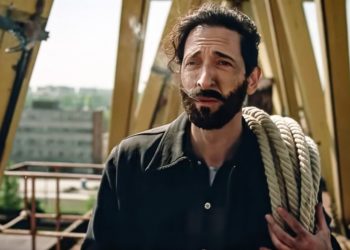This is an edition of Time-Travel Thursdays, a journey through The Atlantic’s archives to contextualize the present. Sign up here.
Why defend academic freedom even when the ideas in question are wrongheaded or harmful? “It is precisely because any kind of purge opens the gate to all kinds of purge, that freedom of thought necessarily means the freedom to think bad thoughts as well as good.”
Those words, written in 1953 by Joseph Alsop, an alumnus of Harvard who later served on its Board of Overseers, are relevant today, as the Trump administration cancels the visas of foreign students for viewpoints that it deems “bad.” And they were relevant in recent years as institutions of higher education investigated and disciplined members of their communities for expressing views that ran afoul of various progressive social-justice orthodoxies. But Alsop wrote them in response to the McCarthy era’s efforts to identify and punish Communists who were working in academia. Hundreds of professors were summoned by the House Un-American Activities Committee and the Senate Internal Security Subcommittee, forced to appear as witnesses, and pressured to name names––that is, to identify fellow academics with ties to the Communist Party. Many were then censured or fired and blacklisted by their employers.
“I have been profoundly and actively anti-Communist all my life,” Alsop declared in a letter to the president and fellows of Harvard, published in The Atlantic. “Unfortunately, however, the question that confronts us is not how we feel about Communists and ex-Communists. The question is, rather, how we feel about the three great principles which have run, like threads of gold, through the long, proud Harvard story.”
The first principle he listed was the freedom to make personal choices within the limits of the law. The second principle was “unrestricted freedom of thought.” And the third principle was one’s right to due process when accused of breaking the law. “A member of our faculty is not to be penalized for any legal choice he may make, however eccentric or controversial,” Alsop wrote. “He may become a nudist or a Zoroastrian, imitate Origen or adopt the Pythagorean rules of diet. If called before a Congressional investigating committee, he may seek the protection of the Fifth Amendment, and refuse to testify on grounds of possible self-incrimination. However much we disapprove, we may not interfere.”
By standing for “unrestricted free trade in ideas,” Alsop sought to conserve the university’s ability to extend the frontiers of human thought and knowledge at a moment that has long been regarded as one of the darkest in the history of American academia. But as Greg Lukianoff, the president of the Foundation for Individual Rights and Expression (FIRE), documented in a 2023 Atlantic article, the threat to academic freedom today arguably surpasses the threat that existed in the 1950s. “According to the largest study at the time, about 100 professors were fired over a 10-year period during the second Red Scare for their political beliefs or communist ties,” he wrote. “We found that, in the past nine years, the number of professors fired for their beliefs was closer to 200.” More recently, FIRE has objected to the Trump administration’s infringements on academic freedom, including the unprecedented demands that it sent to Harvard last month.
Supporters of academic freedom have every reason to fear that more colleges will be similarly targeted in coming months. One defense should involve consulting similar situations from bygone eras. Doing so can help identify principles and arguments that have stood the test of time—and it can be a source of hope. After all, the authoritarian excesses of McCarthyism, which intimidated so many, did not long endure. “From the perspective of the sixties, the whole period has an air of unreality” for many students, a 1965 Harvard Crimson article—written in an era of “sit-ins, summer projects, and full page ads criticizing U.S. foreign policy placed in the Times by hundreds of academics”—declared. But just several years prior, it pointed out, “tenured professors thought long and hard before risking a statement on public issues; teaching fellows, fearful of antagonizing Governing Boards, were politically inert; and students retreated into silence and inactivity.”
I hope that, circa 2030, incoming college students will have trouble understanding the mounting attacks on academic freedom that began about a decade ago. Perhaps this period, echoing the Red Scare’s aftermath, may yet be followed by a new flourishing of academic freedom. A renaissance of that sort will require defending people’s rights—no matter how abhorrent one may find a given opinion. As Alsop put it, “In these cases the individuals are nothing and the principles are everything.”
The post In Defense of Academic Freedom appeared first on The Atlantic.




